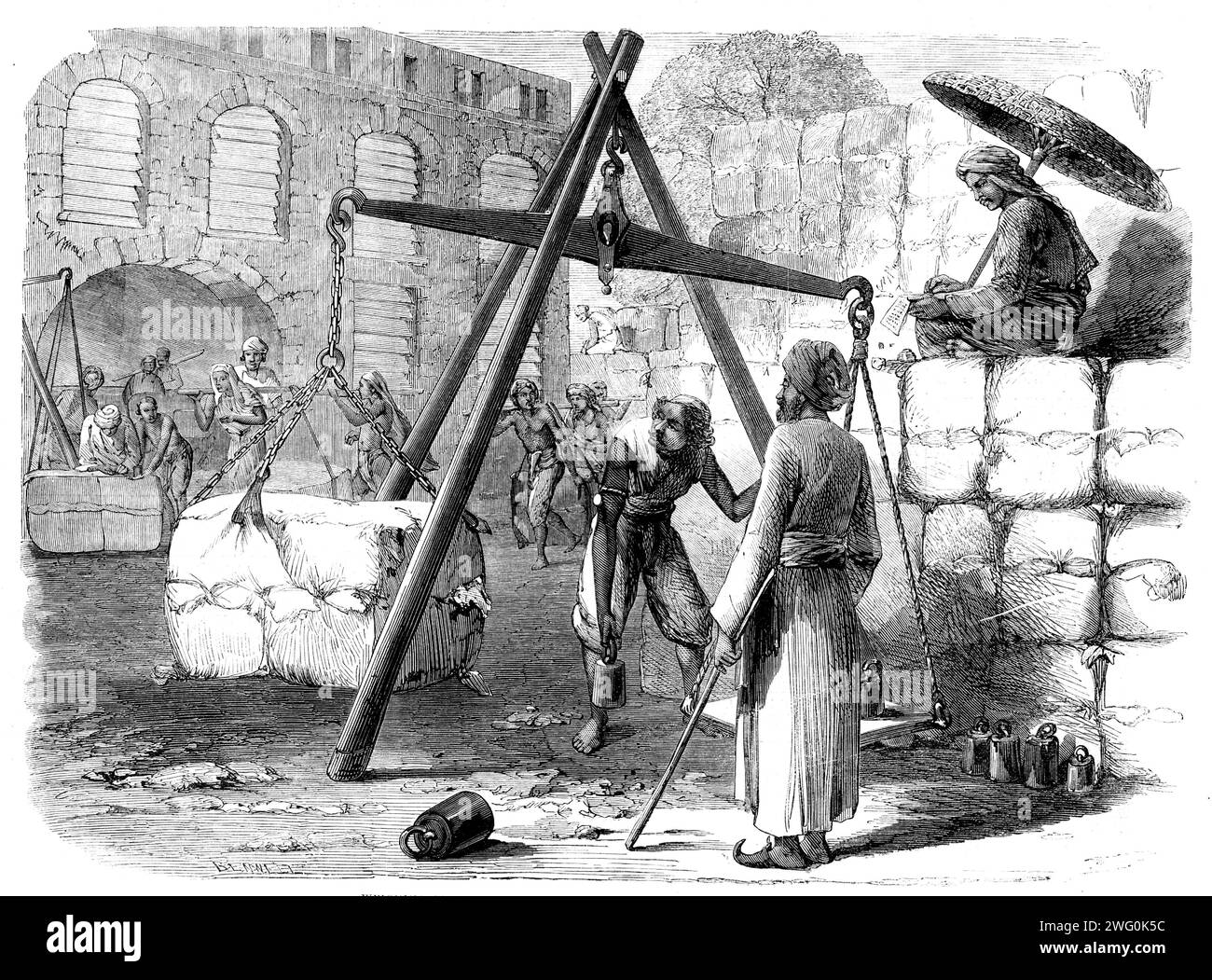Weighing cotton at Bombay for the English market, 1862. Here '...the bales are landed from Surat, Baroche, Cambay, and other parts of Guzerat, Kuttyawa, and Cutch...owing to the absence of good roads for vehicles, the ordinary means of conveyance was, until very recently, by pack-bullocks...This costly and tedious mode of conveyance has now, however, given place in a measure to the railway, although it still has to be employed for bringing the cotton-bales from outlying districts...to the nearest stations on the line of railway. The bale of cotton weighs about 7cwt., and, until compressed by t

Image details
Contributor:
The Print Collector / Alamy Stock PhotoImage ID:
2WG0K5CFile size:
32.4 MB (3.2 MB Compressed download)Releases:
Model - no | Property - noDo I need a release?Dimensions:
3913 x 2893 px | 33.1 x 24.5 cm | 13 x 9.6 inches | 300dpiPhotographer:
The Print CollectorMore information:
This image could have imperfections as it’s either historical or reportage.
Weighing cotton at Bombay for the English market, 1862. Here '...the bales are landed from Surat, Baroche, Cambay, and other parts of Guzerat, Kuttyawa, and Cutch...owing to the absence of good roads for vehicles, the ordinary means of conveyance was, until very recently, by pack-bullocks...This costly and tedious mode of conveyance has now, however, given place in a measure to the railway, although it still has to be employed for bringing the cotton-bales from outlying districts...to the nearest stations on the line of railway. The bale of cotton weighs about 7cwt., and, until compressed by the capstan-screw, is bulky and unwieldy; but this process reduces the bulk one half nearly, and puts it in better form for stowage when the time of shipment arrives. The Illustration shows the process of weighing in the custom-house yard at Bombay. The porterage of almost all articles is done by Hamals, the caste which supplies the palankeen-bearers. Though not by any means robust, they are capable of carrying heavy burdens by means of slings and cross bamboos, which enable them to apply the combined strength of a large number of men to one article, and it is thus the bales of cotton are carried to and fro with the greatest ease'. From "Illustrated London News", 1862.